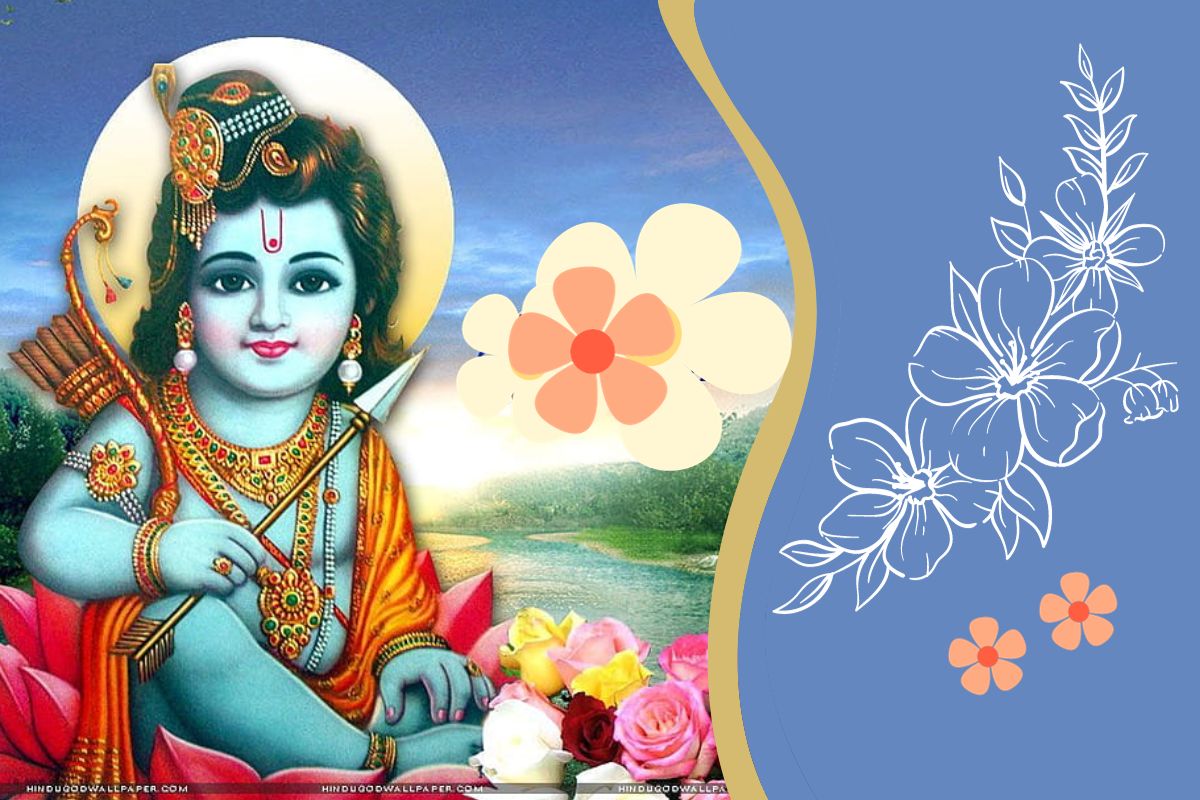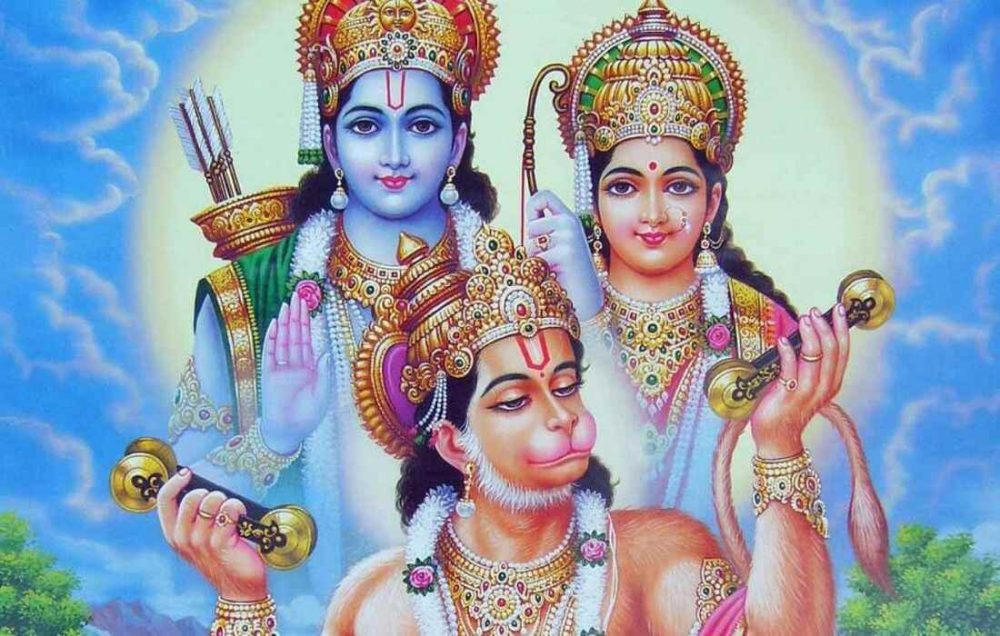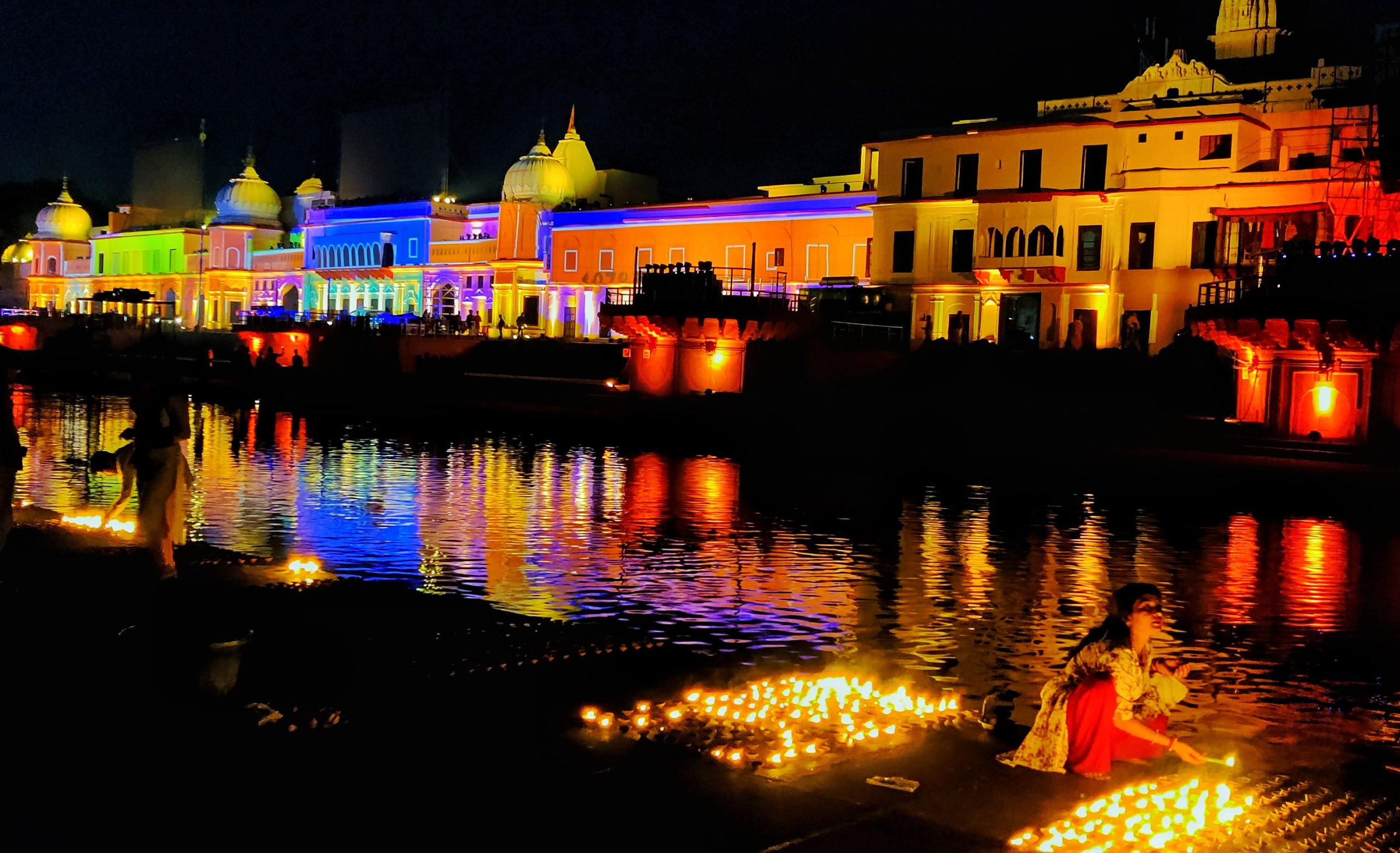
Let’s Have A Intro About Lord Rama
The Ramayana, a well-known Vedic scripture composed by Sri Välmiki, details Lord Rama adventures. Although the Ramayana is written as a historical epic, it incorporates all of the information found in the ancient Vedas. He was a bluish-green color.
His skin glistened like new green grass.
It’s worth noting that what’s written in the Ramayana is better appreciated in its original form. When a text is used as an allegory, it expresses a truth that is greater than the exact truth. This eliminates the potential of reaching a higher truth beyond Him.
Lord Rama came as a man out of charity to His devotees. Appropriately, His history is amazing and full of amazing exploits.
Ramacandra was King Dasaratha’s son. He was the dear of His dad and mom, Queen Kausalya, just as all of Ayodhya, the capital of the single world domain at that point.
King Dasaratha, as he grew older, intended to pass the throne to his eldest son, Rama. As a jubilant Ayodhya prepared to crown the beloved prince, Queen Kaikeyi, one of King Dasaratha’s queens, conspired to depose Räma and install her own son, Bharata, on the throne.
Queen Kaikeyi I took advantage of two boons she had acquired from her husband in appreciation for the service she had provided to him after being persuaded by a corrupt maidservant that Rämacandra would have Kaikeyi’s son slain if He became king.
She summoned her husband to her chambers and asked for the following boons: Ramacandra is banished for fourteen years to the wilderness. Allow Bharata to be crowned king. King Dasaratha fell in horror when he heard these requests.
Dasaratha, as an ideal Kshatriya monarch, would keep his pledge to grant his queen two boons, even if it meant a fate worse than death. The truth was his religion, and he had to honor his word.
When Lord Ramacandra was informed of the terrible news. “Very well,” he just replied. With an unyielding resolve, I will leave here and travel to the Danaka forest for fourteen years.”
Rama’s wife was Sita, who was beautiful and pure. He had shattered a bow that had to be carried by three hundred men because it was so heavy. Räma was thus able to appease Sita’s father,
Janaka, and marry Sita, who possessed transcendental attributes. Sita was believed to be Laksmi, the goddess of fortune because Lord Ramacandra was Vishnu, the Supreme Lord Himself.
Starting Of A Exile
She was accustomed to living like a princess as the daughter of the royal saint Janaka. “On the off chance that You fix to the woods, I will go before You and make smooth the way by squashing the thistles under my feet,” Sita said irately when Rämacandra informed her that she must remain in the kingdom under Bharata’s protection during His exile.
You will not be able to persuade me to leave Your organization, and you will not be able to persuade me otherwise. I will have no regrets about spending a long time with You.”
While Ramacandra was speaking with Sita, Laksmana, Rämacandra’s loving brother, was present. He grabbed Rämacandra’s lotus feet because being parted from Räma was terrible. Räma tried to talk him out of it.
Nothing, however, could sway Laksmana. Laksmana was determined to accompany Sita and Räma to the forest, where they would spend the rest of their lives.
Forest life was intended to be an affront to a royal prince, but Ramacandra managed to cheer Sita up by pointing out the natural setting’s beauty. A forest is supposed to be a location where goodness reigns supreme, ideal for spiritual growth.
While Rama, Sita, and Laksmana were imprisoned in the wilderness, the terrifying Ravana appeared. Ravana was a powerful demon who possessed nearly everything. He had amassed immense power via long periods of rigorous penances.
He had conquered the demigods Kuvera and Indra for the sake of war-mongering. He ruled over the island of Sri Lanka and was opulent and wealthy.
He and his “Rovers of the Night” patrolled the forest, slaughtering and eating hermits who were doing spiritual activities. Ravana had also made a career out of abusing beautiful women wherever he could find them, and he had a harem of hundreds of women who had succumbed to his material power and money.
Ravana believed that he was invincible. God was something he despised. Being the consummate materialist that he was, he even questioned God’s existence.
He questioned everything positively and paid little attention to cautionary advice concerning the negative consequences of wicked conduct. Ravana, on the other hand, choose death by confronting Rama by kidnapping His wife Sita, and he ran headlong towards his doom.
Kidnapping Of Sita
Ravana enlisted the help of his warlord, Marica, to kidnap Sita. Ravana instructed Marica to assume the guise of a golden deer and frolic Sita. If Sita wanted the deer for herself, Rama and Laksmana would pursue her, and Sita may be kidnapped.
Marica appeared in the forest before Sita in the guise of a magnificent deer with silver markings and a gleaming luster.
He drew Sita’s mind, who requested that Ramacandra catch him for her. Of course, Ramacandra was aware that this could be Marica’s Räksasa magic, but he chose to pursue the deer. He would kill him if it turned out to be Marica.
Ramacandra pursued the deer after telling Laksmana to wait with Sita. It became ephemeral, almost impenetrable. Finally, Rama made the decision to kill it. He fired a single lethal arrow that pierced Marica’s heart like a burning snake.
“Alas, Sita!” Marica exclaimed as he took his last breath. “Alas, Laksmana!” exclaims the narrator.
Sita, who was waiting in the hut with Laksmana, heard the cries and assumed they were Rama‘s. She told Laksmana to go immediately to Rama’s aid. Despite Laksmana’s dismissal of the possibility that Ramacandra was in danger, Sita insisted that Laksmana go find Him.
Ravana was able to locate Sita in her own manner, and he forcibly carried her away.
Ravana, who had many heads and twenty arms, flew across the skies grasping Sita in a chariot drawn by asses. Ravana’s downfall was sealed with this act.
He would not only die for kidnapping another man’s wife, but he would also be unable to enjoy her in the interim, even if just for a moment.
Ravana couldn’t constrain his energy to be satisfied, so he compromised Sita that in the event that she didn’t go to him following a year, he would leave her up and have his cooks serve her to him for a banquet.
Idea Where Sita Is
Ramacandra was overcome with grief in the absence of Sita. Laksmana tried to entice Rama out of his sadness, but he was ignored. Finally, the brothers discovered indications of Sita, including clothing remnants from her battle with Ravana and jewellery that had fallen from her as she ascended in Ravana’s chariot.
Rama and Laksmana also obtained information from Jatayu, the old king of the birds, who had attempted to halt Ravana as he flew away before dying.
Rama and Laksmana were informed by Jatayu that Ravana had stolen Sita. Jatayu suggested they create an alliance with Sugriva, the ruler of a monkey race, to help them win her back.
Sugriva aided by rallying his warriors and dispatching them in pursuit of Sita. The army began to lose hope after months of fruitless searches. Some returned, while others dispersed to other regions.
The kingdom of Lanka, far distant in the Indian Ocean, was discovered by Hanuman, the king’s top counselor.
Hanuman Went To Sri Lanka
Hanuman made the decision to look for Sita via flying. Hanuman had the ability to fly since he was the son of Vayu, the wind god. He crossed the ocean to Lanka in a single bound.
Hanuman, shrunk to the size of a cat, walked steadily into Ravana’s capital, taking careful notes on everything. As a servitor, he was constantly worried that he would be discovered and the project would be ruined. “Great impediments will arise for the completion of my master’s project if I lose my life,” Hanuman reasoned.
To this day, all saints and professors of Vedic science laud Hanuman as the ideal servant for his constant devotion to Lord Rama.
Hanuman explored the Asoka jungle for Sita, eventually finding her in the center of it. He informed her that he was on his way from Ramacandra and that they would be reunited shortly. Hanuman slaughtered hundreds of rakshasa warriors and set the entire city on fire when he fled the island of Lanka.
The army of monkeys assembled in the millions and marched to the sea.
The Lord then had His faithful slaves, such as Hanuman and Sugriva, toss massive rocks into the sea, which floated on the water thanks to the Lord’s superior might, building a bridge to Lanka. The army then marched into Lanka, right under the nose of the Raksasa monarch.
Hand-to-hand warfare soon followed, with great warriors from both sides fighting to the death day after day. One by one, the mighty Raksasa chieftains were defeated by heroes like Hanuman, Laksmana, Sugriva, and Ramacandra, who had infinite powers. Lord Ramacandra finally dispatched Ravana with a Brahmastra weapon drawn from His bow.
The genesis of this weapon is described by Valmiki. It was passed down from sage to sage and given down by Lord Brahma.
The Brahmastra was covered in fat and blood and smoked like a doomsday bomb. It was hard and deep-sounding, and when Ramacandra shot it, it slashed Ravana’s heart in half, killing him.
Rama and Sita were reunited, and after a fourteen-year exile, they flew back to Ayodhya on a flower-bedecked jet.
His Sacred Grace “The comparative studies on the life of Krsna and Ramacandra are very intricate,” says A.C. Bhaktivedanta Swami Prabhupada, “however the essential rule is that Ramacandra showed up as the best lord, and Krishna showed up as the Supreme Personality of Godhead, in spite of the fact that there is, in reality, no distinction between the two.”
Lord Caitanya is a good illustration of this. Although He is Krishna Himself, He manifested as a devotee rather than the Supreme Personality of Godhead. Appropriately, we must accept the Lord’s mood in His unique appearance and worship Him accordingly. Our worship should be in tune with the Lord’s mood And These Things Make Him Know “ Maryada Purushottam “.



